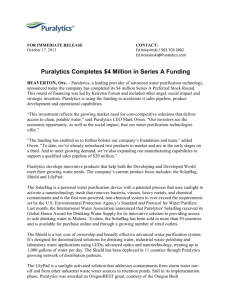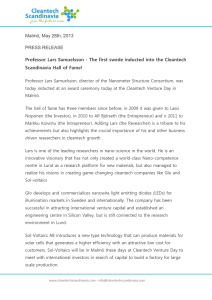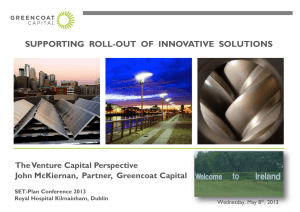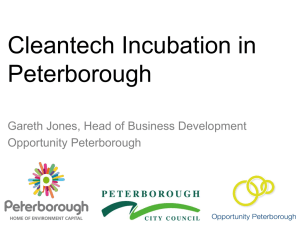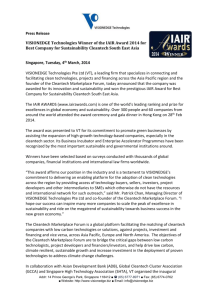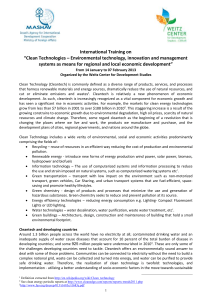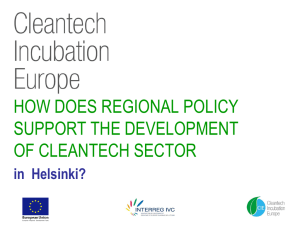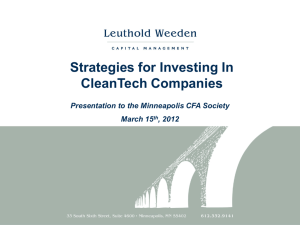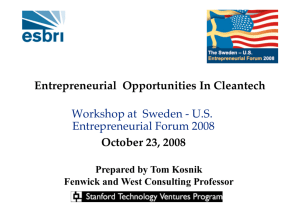more - SPD Control Systems
advertisement
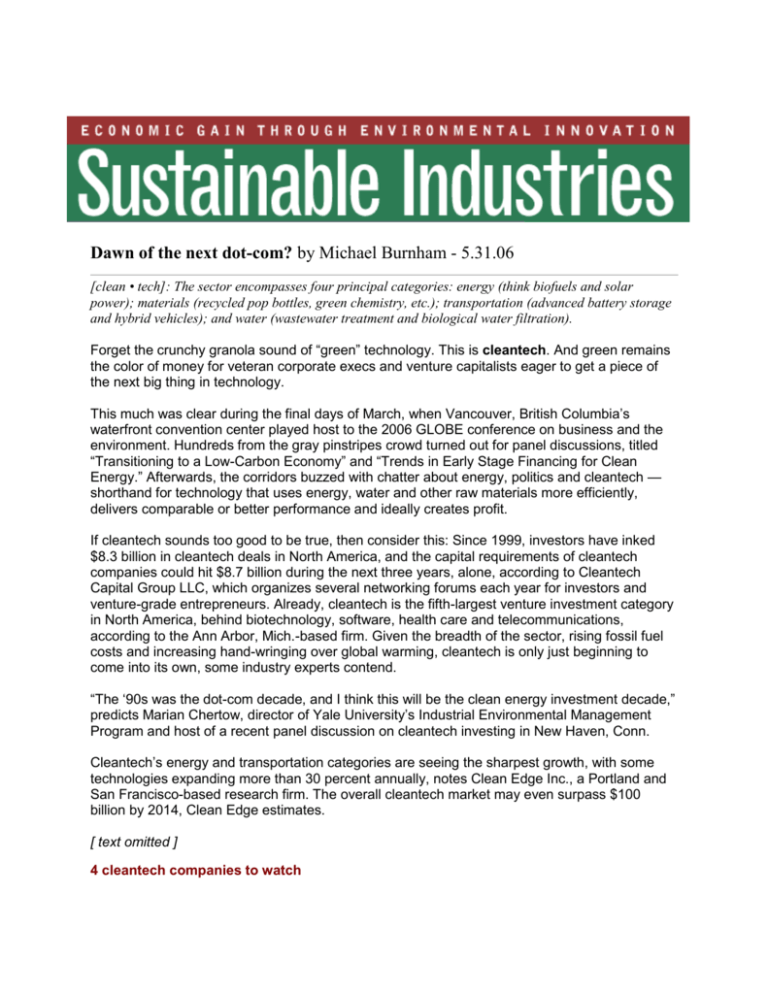
Dawn of the next dot-com? by Michael Burnham - 5.31.06 [clean • tech]: The sector encompasses four principal categories: energy (think biofuels and solar power); materials (recycled pop bottles, green chemistry, etc.); transportation (advanced battery storage and hybrid vehicles); and water (wastewater treatment and biological water filtration). Forget the crunchy granola sound of “green” technology. This is cleantech. And green remains the color of money for veteran corporate execs and venture capitalists eager to get a piece of the next big thing in technology. This much was clear during the final days of March, when Vancouver, British Columbia’s waterfront convention center played host to the 2006 GLOBE conference on business and the environment. Hundreds from the gray pinstripes crowd turned out for panel discussions, titled “Transitioning to a Low-Carbon Economy” and “Trends in Early Stage Financing for Clean Energy.” Afterwards, the corridors buzzed with chatter about energy, politics and cleantech — shorthand for technology that uses energy, water and other raw materials more efficiently, delivers comparable or better performance and ideally creates profit. If cleantech sounds too good to be true, then consider this: Since 1999, investors have inked $8.3 billion in cleantech deals in North America, and the capital requirements of cleantech companies could hit $8.7 billion during the next three years, alone, according to Cleantech Capital Group LLC, which organizes several networking forums each year for investors and venture-grade entrepreneurs. Already, cleantech is the fifth-largest venture investment category in North America, behind biotechnology, software, health care and telecommunications, according to the Ann Arbor, Mich.-based firm. Given the breadth of the sector, rising fossil fuel costs and increasing hand-wringing over global warming, cleantech is only just beginning to come into its own, some industry experts contend. “The ‘90s was the dot-com decade, and I think this will be the clean energy investment decade,” predicts Marian Chertow, director of Yale University’s Industrial Environmental Management Program and host of a recent panel discussion on cleantech investing in New Haven, Conn. Cleantech’s energy and transportation categories are seeing the sharpest growth, with some technologies expanding more than 30 percent annually, notes Clean Edge Inc., a Portland and San Francisco-based research firm. The overall cleantech market may even surpass $100 billion by 2014, Clean Edge estimates. [ text omitted ] 4 cleantech companies to watch [ text omitted ] Smart Glass: A cleaner shade of green Cars, airplanes and buildings have long sported tinted windows of all shades. But like any ambitious entrepreneur, John Petraglia thought there has to be a better way to provide some shade during the day and take it away at night. Petraglia got his chance to act on his hunch last October when Research Frontiers Inc. (Nasdaq: REFR) granted his start-up company, SPD Control Systems Corp., a license to make and sell products made with Research Frontiers’ patented light-control film technology. SPD has since developed a demonstration glass panel that turns clear to opaque in about two seconds. The secret is a shock to the system, Petraglia says. The material, called SPD-Smart glass, stands for “suspended particle device.” What makes the glass “smart” is that it is laminated with layers of film containing hundreds of randomly suspended crystals and conductive metal. When an electrical charge is applied, the crystals line up and let in light. “It becomes crystal clear,” says Petraglia. Petraglia’s Stony Brook, N.Y.-based company plans to use the light-control film technology to develop products ranging from high-volume control systems for homes and automobiles to fully networked systems capable of controlling large curtainwall structures in skyscrapers. SPD would make the electronic controllers that manipulate the glass’ tint, while other companies would make the light-control film. SPD Control Systems officials say their cleantech product has many environmental benefits over regular glass. The tone of SPD-Smart glass can be changed manually or automatically, so daylighting can be optimized and electric lighting minimized. What’s more, the glass can boost energy conservation by utilizing or reducing the effects of solar heat gain through glass. A typical glass window can be operated for a year for less than 50 cents worth of energy, the company says. Dinippon and Hitachi are already producing the patented light-control film, so Petraglia is moving aggressively to raise investment capital to begin commercial production of SPD-Smart electronic controllers this summer. Petraglia presented information about his 6-month-old company at San Francisco’s Cleantech Venture Forum in late March. The move has stirred up interest from “major” investment houses but there were no immediate deals, Petraglia told SIJ in May. If things go according to plan, Petraglia says he hopes to begin selling his product to the auto and aeronautics industries, initially, and then the construction industry. “We think we’re going to change the marketplace very rapidly,” he adds.

